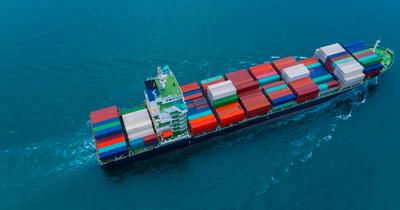
This article may contain affiliate links where we earn a commission from qualifying purchases.
Key Takeaways
- Outdrives combine inboard engines with outboard propellers for efficient propulsion.
- The outdrive section involves a propeller and gearbox for maneuvering.
- Optimizing the performance of your boat's outdrive ensures smooth sailing.
The outdrive represents a critical component of a boat's propulsion system. But what exactly is an outdrive on a boat?
The outdrive, often referred to as a sterndrive, integrates inboard power with outboard maneuverability, attaching to the boat's stern for propulsion and steering control. It offers a versatile solution for navigating various water conditions with efficiency and precision.
With a penchant for nautical adventures and a treasure trove of boating know-how, I'm here to steer you through the ins and outs of boat propulsion. My expertise allows me to explain complex concepts in a clear and accessible manner, ensuring that you can trust the accuracy and reliability of my guidance. So, let’s dive into the world of boat outdrives and explore how they enhance boat propulsion.
What Is Outdrive on a Boat?
An outdrive, also known as a sterndrive, is a kind of marine propulsion system that combines inboard power with outboard flexibility.
It latches onto the back of the boat, providing the gusto you need to cut through the waves — all while keeping steering and control tightly in your grasp.
Outdrives are not just about pushing your boat forward; they're multitaskers of the marine world. Here are the functions of your boat’s outdrive:
Propulsion
The outdrive's role in propulsion is akin to the engine's powerhouse, converting its power into forward thrust.
This process occurs as the propeller attached to the outdrive spins, effectively churning the water behind and propelling the boat forward with impressive efficiency.
This crucial function ensures smooth navigation through various water conditions, whether cruising leisurely or powering through choppy seas.
Steering
Acting as the rudder's sturdier counterpart, the outdrive facilitates steering by enabling the movement of the entire drive unit.
This mechanism allows boat operators to navigate and change course with precision, ensuring smooth and responsive maneuverability.
Whether making tight turns or docking in crowded marinas, the outdrive's steering capabilities provide the control needed for safe and efficient boating.
Trim Control
Trim control is all about the angle of the outdrive. Adjusting the trim changes how the boat sits in the water, which in turn can enhance performance or improve fuel efficiency. It’s like finding the sweet spot in your recliner — except it’s your boat, and you're optimizing its ride.
Cooling
Did you know your outdrive helps keep things chill? It pulls water in from the lake or sea to cool the engine down.
This is crucial because overheating isn't just a land vehicle issue — it can happen on the water, too!
Gear Shifting
Another critical function of the outdrive is gear shifting, facilitated by its built-in gearbox similar to a car's transmission.
This gearbox enables seamless transitions between forward, neutral, and reverse gears, providing boat operators with full control over speed and direction.
Whether accelerating to cruising speed or executing precise maneuvers, the outdrive's gear-shifting capabilities ensure smooth and efficient operation on the water. Check out this video for more information about an outdrive on a boat.
Common Outdrive Problems
When it comes to boating, outdrives play a crucial role in propelling the vessel and controlling its direction.
However, like any mechanical component, outdrives are susceptible to various problems that can affect performance and safety on the water.
Let's get down to brass tacks and lay out those pesky problems that an Outdrive faces. Here's a quick table to break it down, so you're not left floundering:
How to Optimize the Performance of Your Boat Outdrive
Optimizing the performance of your boat's outdrive is essential for ensuring smooth sailing and maximizing efficiency on the water.
From regular maintenance to propeller adjustments, there are various steps you can take to enhance the functionality of your outdrive and improve your overall boating experience.
Here are the key strategies and techniques for optimizing the performance of your boat outdrive:
- Regular Maintenance: Ensure that your outdrive is properly lubricated and free from any debris or damage.
- Proper Trim Adjustment: Adjust the trim of your outdrive to achieve the optimal angle for speed and efficiency.
- Propeller Inspection: Check the condition of your propeller regularly and replace it if it's damaged or worn out.
- Monitor Engine RPM: Keep an eye on your engine's RPM to ensure that it's operating within the recommended range for your outdrive.
- Clean Hull: Keep the hull of your boat clean to reduce drag and improve overall performance.
- Avoid Overloading: Avoid overloading your boat with excess weight, as this can put a strain on your outdrive and decrease performance.
- Monitor Temperature: Keep an eye on the temperature of your outdrive to prevent overheating and damage.
Frequently Asked Questions
Here are the FAQs about an outdrive on a boat.
How do outdrive systems on boats link up with other components?
Your boat's outdrive needs a strong connection to the other parts to keep things moving smoothly. It hooks up with the engine sitting snugly inside the boat and extends its reach to the propeller outside, through a drive shaft.
What should I expect in terms of lifespan for a boat's outdrive?
The lifespan of a boat's outdrive can vary. If you treat your outdrive with care, performing regular maintenance and checks, you can expect it to last for a good 5 to 10 years.
Could you give me a ballpark figure for the repair costs of boat outdrives?
Repair costs can feel like a fishing expedition for your wallet. Boat outdrive repairs could cost you anywhere from a few hundred dollars for minor issues to several thousand for a full-on replacement.










